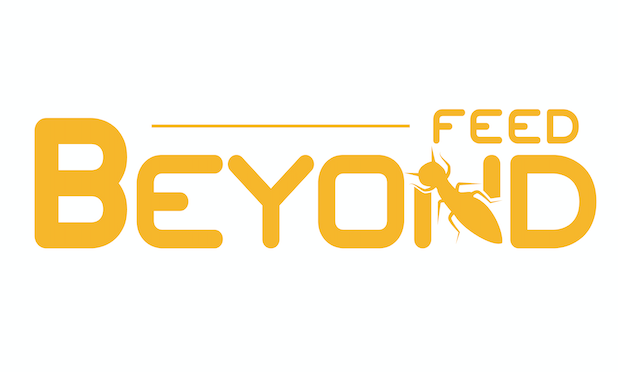The quest for sustainable and nutrient-rich feed options for poultry has led to increasing interest in insects, particularly mealworms (Tenebrio molitor) and black soldier fly larvae (Hermetia illucens). This interest is driven by their high protein content, essential amino acids, and favorable fatty acid profiles. This blog explores the scientific findings on the benefits of incorporating mealworms and black soldier fly larvae into chicken diets, emphasizing the potential of BeyondFeed™ products to revolutionize poultry nutrition.
Nutritional Composition and Benefits
Protein and Amino Acid Profile
Mealworms and black soldier fly larvae are rich in protein, a critical nutrient for the growth and development of chickens. Mealworms contain approximately 50-55% crude protein, while black soldier fly larvae offer 32-42% crude protein. Both insects provide a balanced amino acid profile, which is essential for poultry growth and productivity.
A study by Bovera et al. (2016) demonstrated that chickens fed diets supplemented with black soldier fly larvae exhibited improved growth rates and feed conversion ratios compared to those on conventional diets. The larvae's protein quality was found to be comparable to fishmeal, a commonly used protein source in poultry diets (Bovera et al., 2016).
Fatty Acids and Energy Content
In addition to protein, insects provide beneficial fatty acids. Black soldier fly larvae, in particular, are rich in lauric acid, a medium-chain fatty acid known for its antimicrobial properties. This can help improve gut health and reduce the need for antibiotics in poultry farming (Spranghers et al., 2017).
Moreover, the high fat content in mealworms (about 25-30%) makes them a valuable energy source. This is especially beneficial during the colder months when chickens require more energy to maintain body heat (Ravindran, 2013).
Health Benefits
Enhanced Immune Function
Feeding insects to chickens can boost their immune systems. The chitin in insect exoskeletons acts as an immunostimulant, enhancing the birds' ability to fight off infections. Research by Park et al. (2014) indicated that chickens fed black soldier fly larvae had increased levels of immunoglobulins, which are crucial for immune defense (Park et al., 2014).
Improved Gut Health
Incorporating insects into chicken diets can positively affect gut health. The antimicrobial properties of lauric acid in black soldier fly larvae can reduce pathogenic bacteria in the gut, promoting a healthier microbiome. This can lead to better nutrient absorption and overall health (De Marco et al., 2015).
Environmental and Economic Benefits
Sustainability
One of the most significant advantages of using insects like mealworms and black soldier fly larvae in poultry feed is their environmental sustainability. Insects can be reared on organic waste, reducing the need for conventional feed resources and mitigating waste disposal issues. Moreover, they have a low environmental footprint, requiring less land, water, and feed compared to traditional livestock (Van Huis et al., 2013).
Cost-Effectiveness
Using insects in poultry feed can be economically beneficial. The production cost of insect protein is expected to decrease as farming technologies advance, making it a cost-effective alternative to traditional protein sources like soybean meal and fishmeal (Rumpold and Schlüter, 2013).
Practical Applications and Future Prospects
BeyondFeed™ Products
BeyondFeed™ offers a range of insect-based poultry feed products, including dried mealworms and black soldier fly larvae. These products are sustainably sourced and processed in FDA-registered and GMP+ certified facilities, ensuring high quality and safety. By incorporating BeyondFeed™ products into your poultry feed regimen, you can enhance the nutritional profile of your chickens' diet while supporting sustainable farming practices.
Research and Development
Ongoing research continues to explore the full potential of insects in poultry nutrition. Future studies may focus on optimizing insect farming practices, improving the nutritional quality of insect feed, and exploring the synergistic effects of combining insects with other feed ingredients (Makkar et al., 2014).
Conclusion
The scientific evidence supporting the use of mealworms and black soldier fly larvae in chicken diets is compelling. These insects provide high-quality protein, beneficial fatty acids, and essential nutrients that enhance growth, immune function, and overall health in chickens. Moreover, their environmental and economic benefits make them a sustainable and cost-effective feed option. By integrating BeyondFeed™ products into poultry nutrition, farmers can contribute to a more sustainable and efficient agricultural system while ensuring optimal health and productivity in their flocks.
References
Bovera, F., Loponte, R., Marono, S., Piccolo, G., Parisi, G., Iaconisi, V., ... & Nizza, A. (2016). Use of Tenebrio molitor larvae meal as protein source in broiler diet: Effect on growth performance, nutrient digestibility, and carcass and meat traits. Journal of Animal Science, 94(1), 639-647.
De Marco, M., Martínez, S., Hernandez, F., Madrid, J., Gai, F., Rotolo, L., ... & Schiavone, A. (2015). Nutritional value of two insect larval meals (Tenebrio molitor and Hermetia illucens) for broiler chickens: Apparent nutrient digestibility, apparent metabolizable energy and apparent ileal amino acid digestibility. Journal of Animal Science and Biotechnology, 6(1), 1-7.
Makkar, H. P., Tran, G., Heuzé, V., & Ankers, P. (2014). State-of-the-art on use of insects as animal feed. Animal Feed Science and Technology, 197, 1-33.
Park, S. I., Chang, B. S., & Yoe, S. M. (2014). Detection of antibacterial substances from black soldier fly larvae and their antibacterial activity. Veterinary Microbiology, 178(1-2), 265-271.
Ravindran, V. (2013). Poultry feed availability and nutrition in developing countries. In Poultry Development Review (pp. 60-63). FAO.
Rumpold, B. A., & Schlüter, O. K. (2013). Potential and challenges of insects as an innovative source for food and feed production. Innovative Food Science & Emerging Technologies, 17, 1-11.
Spranghers, T., Ottoboni, M., Klootwijk, C., Ovyn, A., Deboosere, S., De Meulenaer, B., ... & De Smet, S. (2017). Nutritional composition of black soldier fly (Hermetia illucens) prepupae reared on different organic waste substrates. Journal of the Science of Food and Agriculture, 97(8), 2594-2600.
Van Huis, A., Dicke, M., & Van Loon, J. J. (2013). Insects to feed the world. Science, 341(6152), 123-124.

